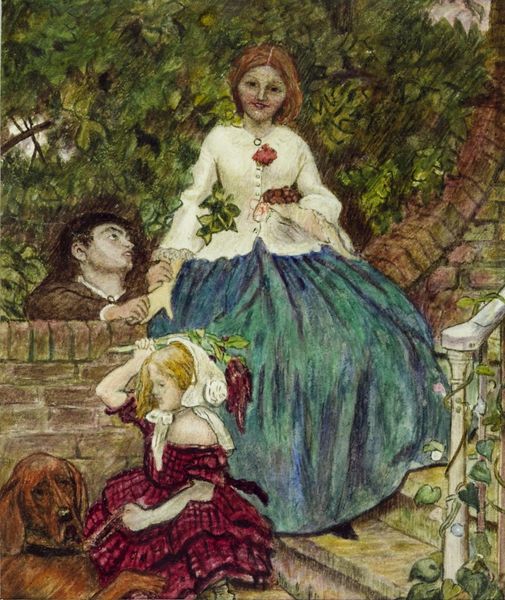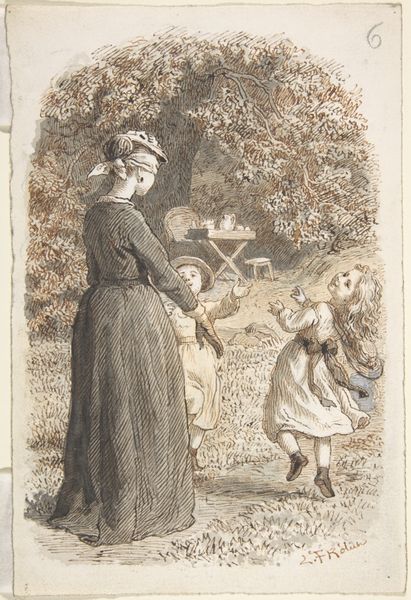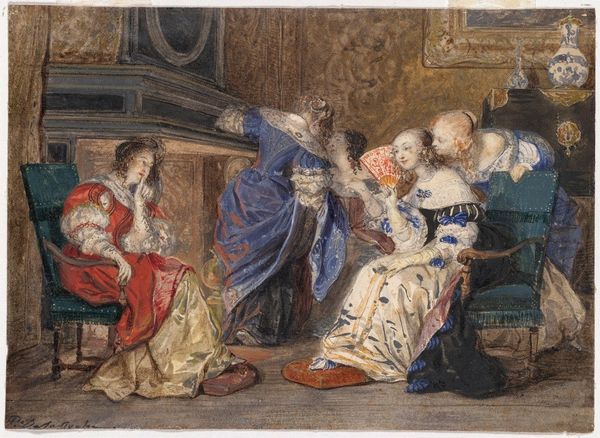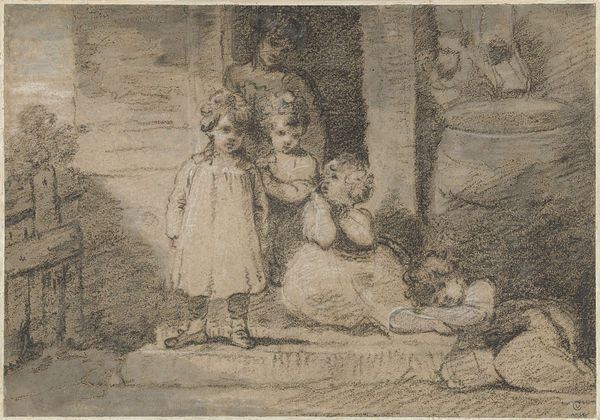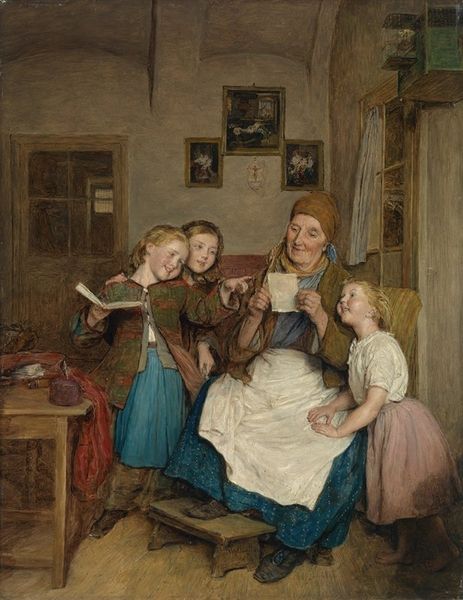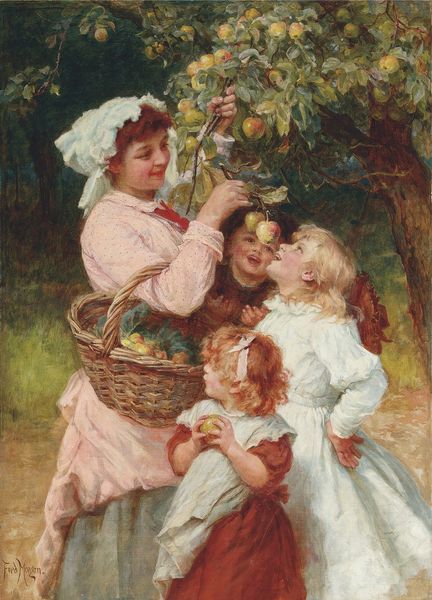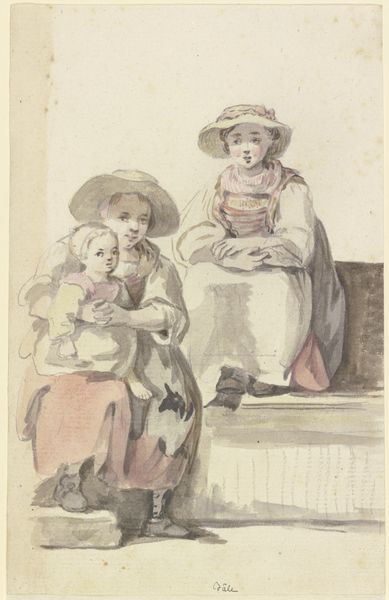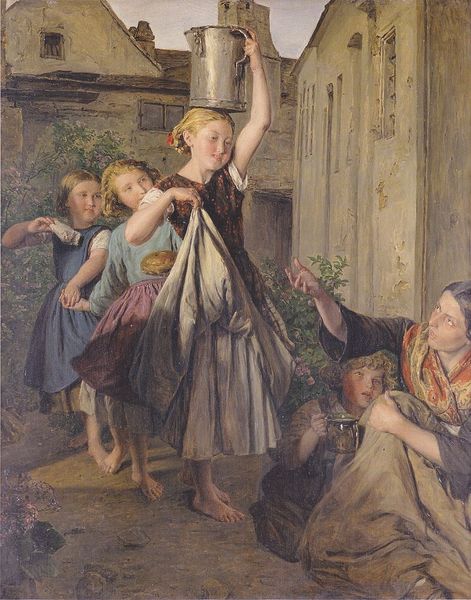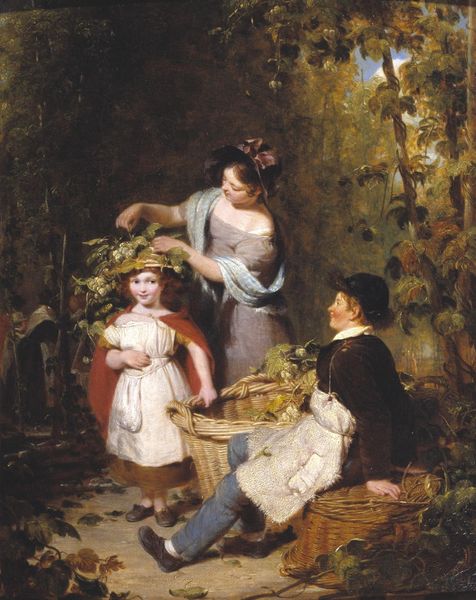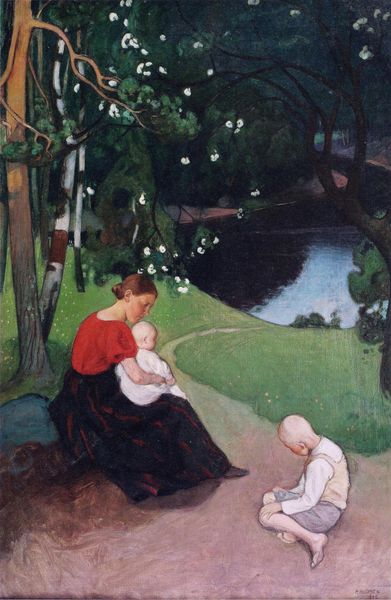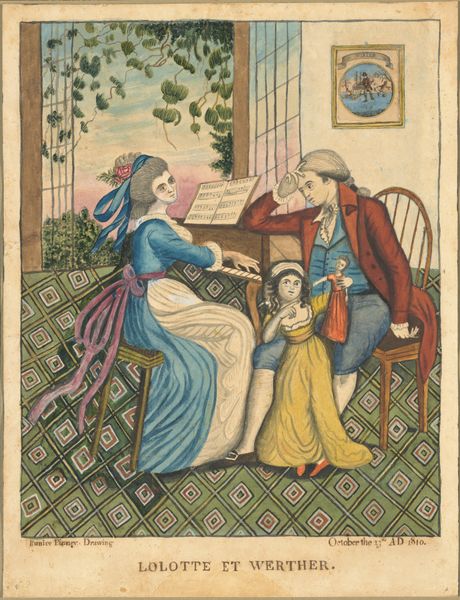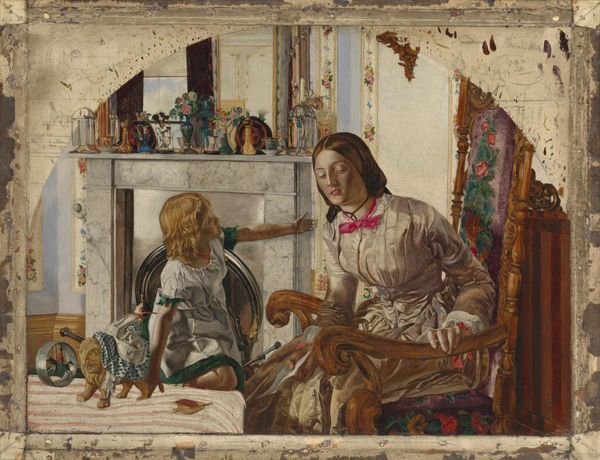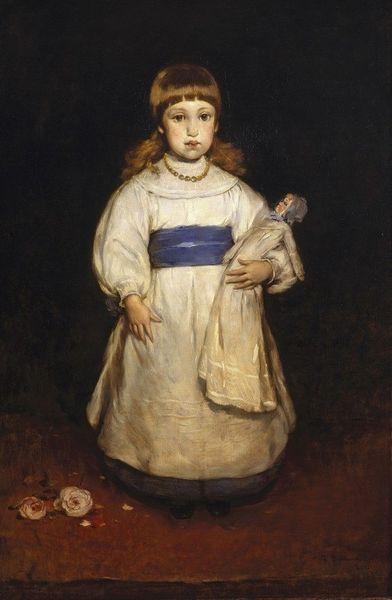
painting, watercolor
#
portrait
#
gouache
#
narrative-art
#
painting
#
figuration
#
oil painting
#
watercolor
#
watercolour illustration
#
history-painting
#
pre-raphaelites
#
watercolor
Copyright: Public domain
Curator: This is Ford Madox Brown’s "Stages of Cruelty," created around 1890. The Pre-Raphaelite brotherhood definitely influenced its style. What’s your take on this tableau? Editor: It's quite unsettling! The expressions on the figures...it seems to depict different forms of, well, cruelty, maybe. What can you tell me about Brown’s intentions here? Curator: I see this piece as deeply embedded in the Victorian socio-economic fabric. Consider the labor involved in creating the scene – from the pigments painstakingly mixed, the canvas woven, to the garments worn by the subjects. What statements are made regarding access and labor given the costuming that depicts differences in economic standing? Editor: That's interesting. I hadn’t considered the material production of the painting itself in relation to the narrative. Are you suggesting Brown is critiquing class divisions here? Curator: Absolutely. And not just critiquing but revealing the systems that permit and normalize “cruelty” – it becomes almost mundane, habitual, baked into daily existence through materials that reinforce hierarchical class status and related social constructs. It begs the question, does art merely depict, or does the act of creating also solidify material constructs and hierarchies? Editor: That shifts my perspective completely. So it's less about individual acts of cruelty and more about how materials—and therefore, the means of production and consumption—support those acts on a systemic level? Curator: Precisely. It's a commentary on the manufacturing of social ills, quite literally. Editor: I see. Focusing on materiality adds so much depth. Thank you! Curator: Indeed. Paying attention to the materiality of an artwork unveils how art operates within power structures of its day.
Comments
No comments
Be the first to comment and join the conversation on the ultimate creative platform.
